Mallards, though common, are often overlooked. Many birders consider them a “trash” bird, that is, one that is so common that they are hardly worth taking the time to study or appreciate. This is unfortunate, as the gaudy green of the male Mallard is certainly worth looking at and is matched in its brilliant beauty by the subtle plumage of the female. And is anything cuter than a Mallard duckling?
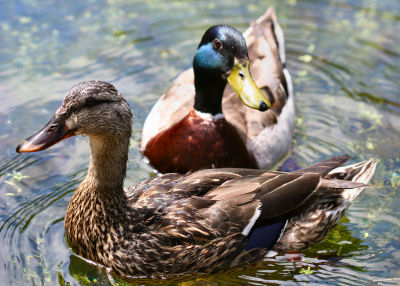
pair of Mallards at Congress Park, Saratoga Springs, NY
Almost everybody has seen a Mallard. Their range is Holarctic, which means that they occur around the world in the northern hemisphere, across Europe, down to where the tropics start in North America and Asia and down to the Sahara in Africa. I wouldn’t be the least bit surprised to learn that they had spread beyond that as well.
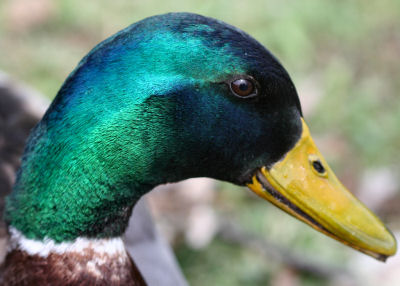
male Mallard in profile
In North America, they are virtually ubiquitous. In his Essential Field Guide Companion, Pete Dunne describes their habitat as “Tundra ponds, city parks, prarie sloughs, tule marshes, tidal flats, storm runoff catch basins, dry agricultural lands…the bird has even been known to place its nest amid dry desert cactus (but a stone’s throw away from a cattle watering trough) and tucked into suburban shrubbery one six-lane interstate removed from the nearest water.”
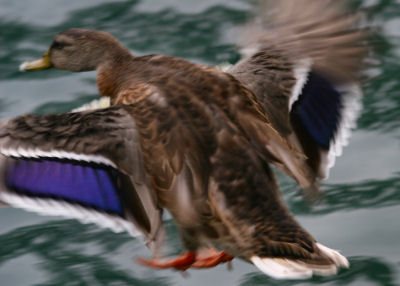
female Mallard at the Temecula Duck Pond, Temecula, CA
But at the turn of the last century, Mallards, unprotected and hunted hard, were actually difficult to find. In The Birds of Albany County, a 1907 work by William Webster Judd, he describes them as a “rare migrant,” meaning that only with luck would you see them passing through the county and you wouldn’t see them breeding at all! According to the most recent version of Bull’s Birds of New York State “it was almost unknown as a breeder until the beginning of the twentieth century. Numbers increased steadily until the 1950s, when a virtual population explosion began, which is continuing today.”
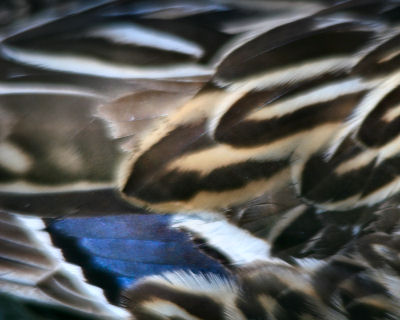
feathers of a female Mallard
Mallards are a dabbling duck, which means that they don’t normally dive underwater for their food (though they do dive on occasion). Instead, they tip up, stretching their necks to grab plants, insects, crustaceans and virtually anything else they can get. I have seen ducklings diving completely underwater (and staying down for fifteen seconds) but if they were diving for fun or for food I don’t know.
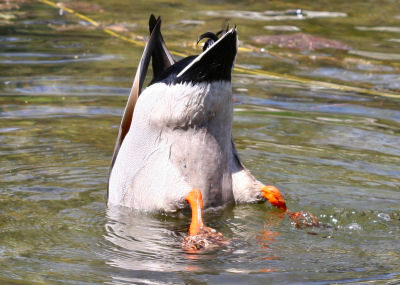
dabbling male Mallard
Mallards migrate when forced to by freezing water. In cold winters around here they are often found in small creeks that run fast enough not to freeze. As the ice retreats, the Mallards return. Their flight is strong with regular wingbeats and they can launch themselves directly into the air at a moment’s notice.
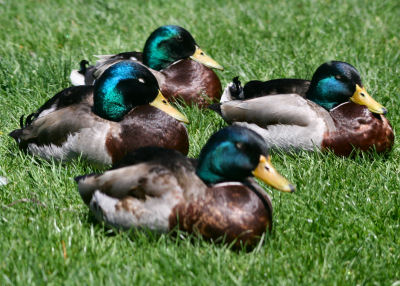
sleepy male Mallards at Congress Park, Saratoga Springs, NY
Unfortunately for the female, drake Mallards do not participate in the child rearing process. The female is left to fend for herself and the ducklings. Lucky for the female, like most (all?) waterfowl, mallard ducklings are precocious, able to leave the nest and feed themselves soon after hatching. Mallards often hybridize or are intentionally bred with a variety of other species as well, resulting in what some term “Manky Mallards.”
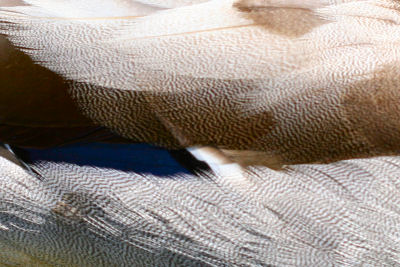
feathers of a male Mallard
So the next time you see a Mallard and sigh, wishing it were a rarer species, remember that Mallards weren’t always so easy to find, and be grateful that the beautiful bird you see in front of you has survived not only the hunters’ guns but being raised in a single-parent pond as well!
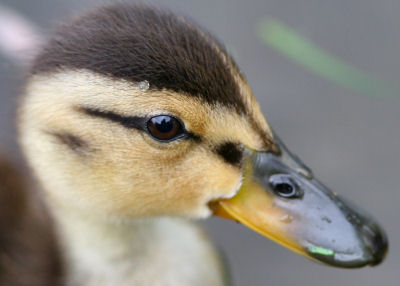
Mallard duckling: certainly not a trash bird!
And now for something completely different: I love monkeys!













There is a book by Witmer Stone – something like “Bird Studies at Old Cape May” – that was published in the early 20th century. One of the interesting points in reading the book is seeing how much the populations of some species have changed. In his day, black ducks were very common, but mallards were declining and difficult to find. Of course, the situation is reversed now.
I have a single female who has only been with us for one day. She caught some bugs in the swimming pool and is now sleeping right beside the pool, two feet away from a male mallard (decorative) decoy. She looks quite full and ready to lay eggs. What should I do? Should I feed her bread? Help make a nest? Thanks, John
@John: I would just leave her be. Unless she seems injured there is no reason to interfere.
> I have seen ducklings diving completely underwater (and staying down for fifteen seconds) but if they were diving for fun or for food I don’t know.
I know. I once watched four Mallard ducklings repeatedly diving straight down through four feet of clear water to scavenge a carp carcass on the bottom. Jericho Park, Vancouver Canada.